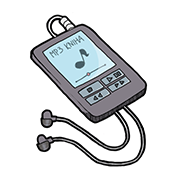A term that includes dyslexia, dysgraphia, dysorthography, and also dyscalculia (difficulties in math skills) as well as some other less common forms of learning difficulties (e.g. dyspraxia or physical clumsiness).
The advantage of this designation is that it includes all kinds of difficulties into one category. Very often it happens that a person who has dyslexia has also dysorthography and dysgraphia. Therefore, when we say a person with dyslexia or dyslexic person in everyday speech, we usually mean a person who has difficulties in reading and writing.
The disadvantage of this term, however, is that the word “learning” makes us think of the school environment too much, and therefore sometimes it might make you forget that these difficulties are reflected in extracurricular, daily activities, and persist into adulthood, when we don’t go to school anymore. Besides, the word “disability” doesn’t sound too good. Much more important is to approach people with dyslexia, dysgraphia or dysorthography as those who learn and work differently. They are not “disabled”; they just need to work in different conditions. And after all it is normal that everybody is different.

Tip: Do you have a required reading list at school? Read the book as an e-book using an e-reader (where you can easily adjust the font size and the amount of text of the page) or get it as an audiobook and “read with your ears” through MP3.